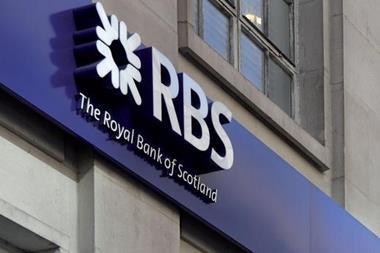H1 loss bigger than H1 2009 profit; Bodily injury claims rise
Royal Bank of Scotland Insurance (RBSI) made a Q2 operating loss of £203m, four times its Q1 loss of £50m, bringing its half year loss to £253m compared with a profit for H1 2009 of £217m.
Its Q2 combined ratio was 128.7% compared with 91.3% for Q2 2009 and 111.9% for Q1 this year. For the first half of 2010 the combined ratio was 120.2%. RBSI blamed bodily injury claims, including £241m for prior year claims for which it had not reserved.
H1 highlights (2009 in brackets) £m
- Gross written premiums 2,182 (2,270)
- Earned premiums 2,248 (2,225)
- Net premium income 2,176 (2,140)
- Total income 2,079 (2,033)
- Underwriting loss/ profit -27 (482)
- Technical result -378 (91)
- Operating loss/profit -253 (217)
- Combined ratio 120.2% (95.2)
RBS said: “The performance of RBS Insurance was adversely impacted by a significant increase in bodily injury reserving, including adding £241m to reserves relating to prior years. This resulted in an underwriting and operating loss in the motor book.
“Actions are in progress to tighten underwriting criteria and to restore the profitability of the business.
Home insurance
“RBS Insurance’s home insurance business has continued to make good progress and the division has now established itself as the largest home insurance provider within the UK.
Motor
“As planned, total in-force policies have declined due to a reduction in motor policies following significant re-pricing as well as exiting less profitable partnership and broker business. This decline has been partly offset by growth in home and international policies. International policy numbers now exceed one million.
Reduction in numbers
“Total income declined, as the increase in pricing was more than offset by the reduction in in-force policies, mainly resulting from the elimination of higher premium, higher risk motor business.
Claims
“Net claims were significantly higher than Q1 2010 due to a further need for increased reserves in respect of bodily injury, driven by deterioration in the observed severity of bodily injury claims.
An overall adjustment of £320m was posted in the quarter, of which £241m was in respect of business written in prior years. Motor pricing continued to be increased in response to the development in this claims experience. In addition, significant progress has been made in removing higher risk business from the overall motor book by targeted rating actions.
H1 comparisons
“Total in-force policies declined by 2%, driven by a fall of 6% in motor own brand motor policies partly offset by a 7% increase in own brand household and life policies. The partnership and broker segment declined by 12% in line with business strategy.
“Total income increased by 2% as a result of pricing actions, partially offset by a reduction in in- force policies, including the removal of higher premium, higher risk motor business.
“Net claims were 36% higher principally driven by an increase in claims reserves in respect of bodily injury and by adverse weather conditions. Significant motor price increases have been implemented to reflect the rising claims costs. In addition, initiatives are being introduced to adapt pricing models and enhance claims management.
“Direct expenses were reduced by 14% with wage inflation more than offset by a reduction in headcount and marketing expenditure. Recently announced plans regarding site rationalisation, off-shoring activity and further planned headcount reduction, will further drive down expenses, delivering a more robust and cost-competitive platform for the business.
“Investment income was lower as a result of an impairment charge in the fixed income portfolio booked in Q1 2010, adjusting for this investment income increased reflecting higher gains realised on the sale of corporate bonds.
“The combined operating ratio, including indirect costs, was 120.2% compared with 95.2% in H1 2009, owing to the impact of increased reserving for bodily injury claims partially mitigated by expense ratio improvement. Excluding increased bodily injury reserving relating to prior years, the combined operating ratio was 108.3%.






































No comments yet